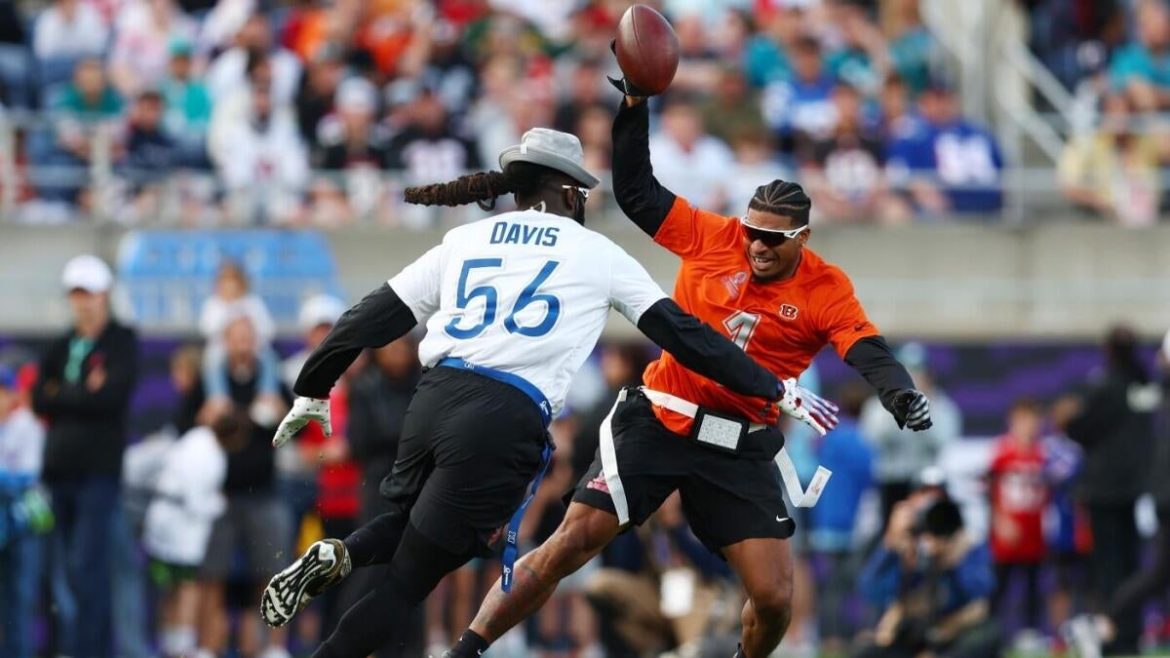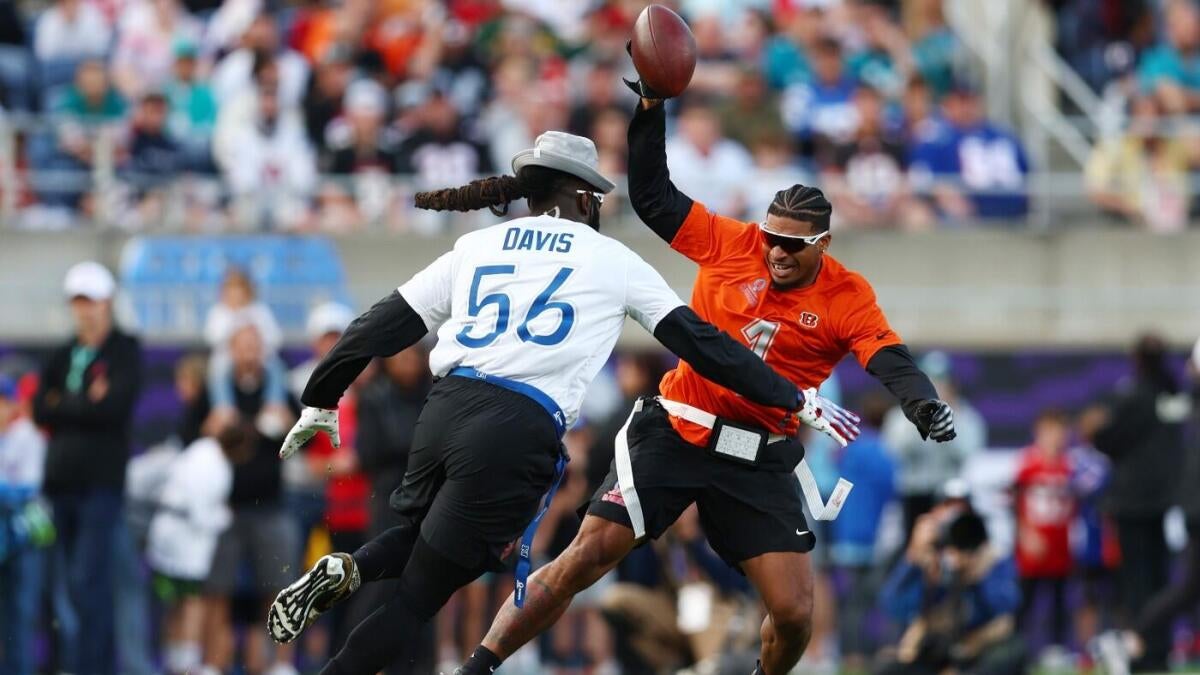The 2028 Summer Olympics in Los Angeles will see the historic debut of flag football as an official Olympic sport, and the NFL has now cleared the way for its players to participate. This decision marks a significant milestone for the league and the sport, blending the global prestige of the Olympics with the popularity and talent of professional American football players. Understanding the developments, implications, and challenges surrounding NFL players’ participation in Olympic flag football provides a fascinating look into the evolving landscape of sports for 2028.
The NFL’s Approval and Its Significance
After considerable anticipation, NFL team owners unanimously voted in favor of allowing active NFL players to compete in flag football at the 2028 Olympics. This approval, made at the Spring League Meeting in Eagan, Minnesota, was the culmination of discussions spanning nearly two years and reflects both the NFL’s enthusiasm for expanding its global footprint and the increasing visibility of flag football as a sport.
Permission for players currently under NFL contracts to participate is subject to certain conditions, including safety protocols and team restrictions. Notably, teams will typically allow only one player per roster to try out for Olympic participation, balancing league interests with player aspirations. The NFL Commissioner, Roger Goodell, emphasized the honor associated with Olympic competition, noting that it represents the pinnacle of global sports achievement.
Why Flag Football in the Olympics?
Flag football’s introduction to the Olympic program is part of a broader effort to modernize the Games and include more youth-oriented, fast-paced, and globally accessible sports. Flag football, a non-contact variation of traditional American football where players remove a flag from the opponent instead of tackling, offers a safer and more inclusive environment that appeals internationally.
The sport previously debuted on the international stage at The World Games in 2022, which added to its credibility and visibility. Furthermore, the decision to showcase flag football in Los Angeles — a city synonymous with American football culture — aligns well with both the international expansion of the NFL and Olympic ideals of athletic diversity and inclusion. With the NFL’s backing, the sport can expect elevated competitiveness and global interest.
Building the 2028 Olympic Flag Football Team: Player Considerations
The NFL’s endorsement means players like Patrick Mahomes, Tyreek Hill, Justin Jefferson, Ja’Marr Chase, and others could potentially represent the United States in flag football. However, the final rosters are subject to extensive vetting and balancing of NFL commitments and Olympic scheduling.
A projected roster, as analyzed by NFL insiders, leans toward a mix of young, high-ceiling athletes alongside established stars who can adapt to the nuances of flag football. For example, Malik Nabers of the New York Giants is mentioned as a promising talent, reflecting the focus on emerging players with agility and speed — critical skills for flag football success.
Besides offensive talents, defensive rushers like Micah Parsons could contribute significantly, given the sport’s emphasis on agility and quick decision-making under non-contact rules. Roster decisions will likely weigh players’ adaptability, injury risk, and willingness to participate in a non-contact but highly strategic variant of football.
Challenges and League Dynamics
Despite the excitement, not all stakeholders within the NFL are fully aligned. Some owners and team executives harbor concerns regarding player availability, injury risk, scheduling conflicts, and the impact on the regular NFL season.
The Olympic schedule overlaps with the NFL offseason but involves training camps, Olympic preparation, and possible conflicts with other offseason priorities. NFLPA (Players Association) discussions continue to focus on negotiating terms that protect player health and contractual obligations while enabling this new opportunity.
Furthermore, the league has set limit conditions to mitigate risks, including controlling player participation numbers and establishing protocols to integrate the Olympics into the broader NFL calendar effectively.
What’s Next After the Approval?
Following the owners’ vote, the NFL and NFLPA are expected to finalize agreements detailing player eligibility, safety measures, and trial processes for Olympic team selection. The process will include tryouts, where only a limited number of players per NFL roster may pursue Olympic participation, likely expanding as the league gains experience with this new venture.
The U.S. Olympic Committee, NFL executives, and coaching staff will assemble a high-performance flag football team, likely drawing from proven NFL athletes while also scouting younger talents poised for international success.
Marketing and media campaigns will emerge in the coming years to promote Olympic flag football, leveraging recognizable NFL stars to attract global audiences and drive fan engagement both for the Olympics and the NFL.
Broad Impact on NFL and International Sport
The integration of NFL players into Olympic flag football has far-reaching implications beyond 2028:
– Globalizing American Football: It positions the NFL as a key driver in advancing American football’s international appeal, especially in countries where tackling football remains less accessible. Flag football, with its low barrier to entry, promises growth in grassroots participation worldwide.
– Raising the Olympic Profile: For the Olympics, flag football injects a dynamic, crowd-pleasing sport with instant name recognition through NFL player involvement, potentially boosting viewership and engagement.
– Athlete Opportunities: NFL players gain a unique platform to extend their athletic careers into the Olympic arena, enriching their personal legacies and inspiring younger athletes.
– Cross-Sport Collaboration: This landmark decision could serve as a model for collaboration between professional leagues and the Olympic movement, blending professional sports stars with Olympic ideals to mutual benefit.
Conclusion: A New Era for Football and the Olympics
The NFL’s approval for players to participate in the 2028 Olympic flag football competition ushers in an exciting new chapter for both the league and the global sporting community. Flag football’s Olympic debut, enhanced by elite NFL talent, promises to invigorate interest worldwide and demonstrate how adaptable, innovative sports formats can thrive on the world’s biggest athletic stage.
As the 2028 Olympics approach, anticipation will build around which NFL stars will don their national colors and redefine football’s international horizons — not through tackles and pads, but with speed, skill, and flags waving. This convergence of pro football and Olympics may well inspire a generation and reshape the sporting landscape for years to come.





